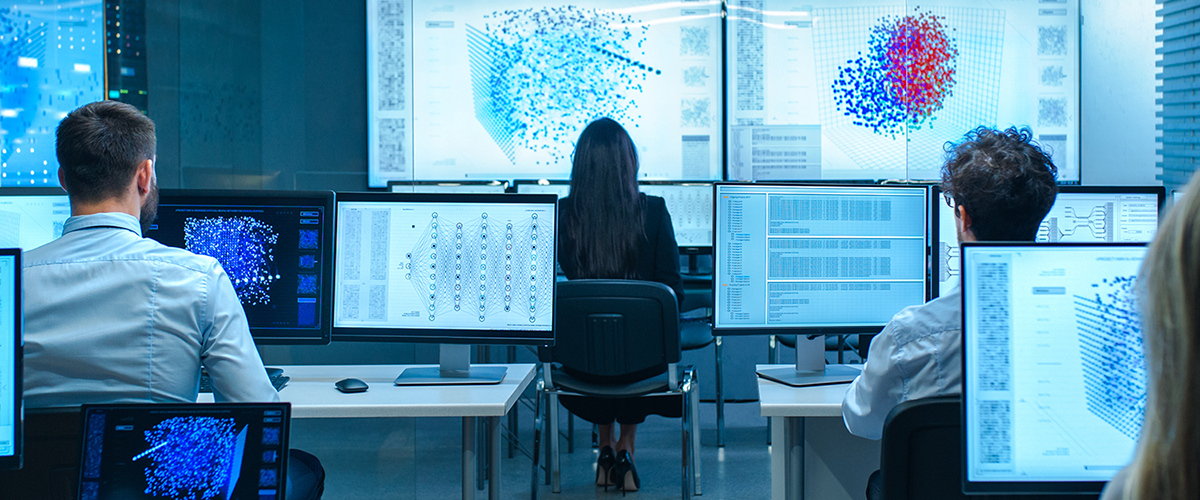Covid-19 Separates Leaders from Laggards in Machine Learning-Driven Demand Forecasting

The difference between companies that continue to gain a competitive advantage from Machine Learning-based demand forecasts and those that struggle to harness the technology could become greater in a post-pandemic future.
Revitalized Demand Forecasting
Machine learning (ML) has revitalized demand forecasting by enabling companies to anticipate customers’ buying patterns with remarkable accuracy, but are ML’s powers compromised by Covid-19’s unprecedented demand patterns?
The answer is yes and no, depending on the type of enterprise and business model involved.
Moreover, the difference between companies that continue to gain a competitive advantage from Machine Learning-based demand forecasts and those that struggle to harness the technology could become greater in a post-pandemic future.
Bridging demanding forecasting gaps with data
In demand forecasting applications, Machine Learning algorithms typically glean insights about past buying behavior from vast volumes of historical information. They then use this knowledge to refine forecasts of future demand.
However, the Covid-19 pandemic is unique - many argue a black swan - event with little historical precedence, offering ML algorithms scant material with which to work. This paucity of information can blunt or even negate ML’s forecast-enhancing powers in enterprises that are not adept at using the technology.
Leading proponents of ML-based demand forecasting appreciate that the antidote to this malaise is data. In a highly volatile, inherently uncertain environment such as that created by the pandemic, ML algorithms need to be fueled by current data streams. Thus, models reflect the nature of markets that can and do turn on a dime.
These leaders tap into a broad array of real-time data sources ranging from apps embedded in supply chains to external market intelligence providers. Moreover, the sources are sufficiently granular to provide a nuanced picture of market conditions at ground level.
For example, what are the regional impacts of Covid-19, such as the effects of different government policies on re-opening businesses or national borders? How is the pandemic reshaping the demand for specific products such as fashion apparel or academic books?
Also, companies that have developed powerful ML-enhanced demand forecasting capabilities often boost the competitive returns of their all-seeing models by integrating them with digitalized supply chain platforms.
The power of experience in machine learning
The latter strategy gives a clue to the types of enterprises that make up this elite group of ML champions: companies that have clocked multiple miles in their ML journeys.
Enterprises positioned far along the ML maturity curve tend to be those that continue to gain maximum advantage from their algorithms even as the pandemic rages. They have built - and continue to build - the data infrastructure described above and have adapted their models to Covid-19’s uncertainties.
In these organizations, model builders collaborate closely with users like demand planners. This is critically important - especially during extreme uncertainty - because these collaborative relationships provide the feedback loops that update the models. Refreshing models with the latest market intelligence also helps to ensure that ML algorithms are learning from the right parameters.
Importantly, ML leaders have not only acquired the expertise needed to create and run models attuned to current market conditions; they have learned how to interpret the outputs from these models. Translating findings into meaningful supply chain tactics and strategies can be challenging. For instance, even the most sophisticated ML-driven demand forecasting model can present anomalies, especially when demand is unusually volatile.
It is also essential to understand that the decision-making environment in which ML models work varies in nature between two extremes: open and closed. Open types are associated with unpredictable change, whereas predefined rules clearly delineate closed environments. These characteristics shape the decision-making process, and hence the way ML models are utilized and evolve. Other factors, notably the human-machine teaming capabilities, also influence the role of ML in forecasting demand.
Highly competent teams keep on progressing along the learning curve. They typically observe and analyze unexpected results for insightful opportunities to improve model training. Less able teams are more likely to be engaged in fire-fighting activities as they struggle to leverage the technology.
In short, deep technical and operational knowledge combined with curiosity and intuition enables leaders to maximize the competitive gains from ML-based demand forecasting.
Oriented towards growth post-pandemic
The ML leaders’ competitive advantages are likely to become even more pronounced when the Covid-19 crisis subsides because the skills they acquired will make them formidable competitors.
This benefit is particularly striking for those companies driven by a culture of innovation and the need to turn adversity into opportunity. Their guiding light during the pandemic is growth - as opposed to survival. They know that applying the key lessons learned during the crisis to product innovation can open new growth avenues in a post-pandemic future.
Supply Chain 24/7 Education Resource Center
Find the latest educational resources, degrees, and programs.
Visit: Supply Chain 24/7 Education Resource Center
Article Topics
MIT Center for Transportation and Logistics News & Resources
Supply Chain’s Next Decade of Dealing With the Unknown Sustainability Efforts Continue to Ramp Up, Research Finds Supply Chain Sourcing Alternatives to China DAT’s Caplice Reviews Spot Market Strategy for 2024 Budget Planning Yellow’s Demise Underscores the Need for a New Labor Relations Narrative Is Your Supply Chain Talent Ready for the Future? The Rebound Podcast: Yossi Sheffi and The Magic Conveyor Belt More MIT Center for Transportation and LogisticsLatest in Business
Happy Returns Partners With Shein and Forever 21 to Simplify Returns Baltimore Opens 45-Foot Deep Channel Following Bridge Collapse Ranking the World’s 10 Biggest Supply Chains The Top 10 Risks Facing Supply Chain Professionals Walmart’s Latest Service: Ultra Late-Night Delivery Dollar Tree’s Oklahoma Distribution Center Decimated by Tornado City of Baltimore Files Lawsuit to Recoup Money for Collapsed Bridge More Business













